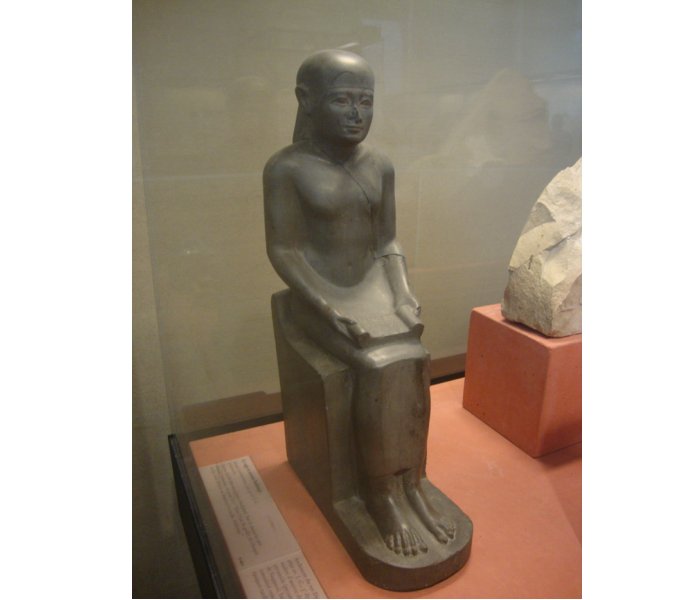MessageToEagle.com – During his life Imhotep accomplished many things that made him remembered long after his death. He was well-known for his intelligence and wisdom. Imhotep, or “he who comes in peace,” was an ancient Egyptian genius and the great architect of the world’s first known monumental stone building, the Step Pyramid at Sakkara.
A great mind of ancient Egypt
Born in the 27th century BCE, in Ankhtowe, a suburb of Memphis, Egypt, Imhotep showed very early he had many talents. Imhotep’s father, Kanofer, a celebrated architect, was later known to be the first of a long line of master builders who contributed to Egyptian works through the reign of King Darius the First (522–486 B.C.E. ).
Imhotep followed in his father’s footspteps and became even more influential. He was not only the inventor of the Sakarra pyramid, but also author of ancient wisdom, architect, high priest, physician, astronomer, and writer. His knowledge was so vast that he was later promoted to the status of a god and became worshipped as the god of medicine in Egypt and in Greece, where he was identified with the Greek god of medicine, Asclepius.
He is said to have extracted medicine from plants and treated diseases such as appendicitis, gout and arthritis.

It was his intelligence and determination that enabled Imhotep to rise through the ranks to become a trusted advisor of the Egyptian pharaoh Djoser (reigned c.2630 – c.2611 BC). Imhotep’s high standing in Djoser’s court is affirmed by an inscription bearing his name on a statue of Djoser found at the site of the Sakkara pyramid.
Imhotep builds the Sakkara pyramid
Pharaoh Djoser and Imhotep decided to build an enormous mastaba of stone, but at some point during construction they built another mastaba on top of the first—and then another on top of the second. They continued this process until they had enlarged the structure into the world’s first pyramid. It was what we now call a “step pyramid,” consisting of six terraces some 200 feet (60 m) high.
The pyramid of Sakkara was the first structure ever built of cut stone, and is by far the oldest of the Seven Wonders of the World, the seven structures of the ancient world that were astonishing accomplishments for their time. It took twenty years to complete—not very long, given the newness of the idea and the state of structural science in the Bronze Age (between 3000B.C.E. and 1100 C. E.), the period of development where metals, particularly bronze, were used for the first time.
Imhotep wanted the tomb to accommodate the Pharaoh’s rise into the heavens.
Imhotep becomes a deity
In the New Kingdom Imhotep was venerated as the patron of scribes, personifying wisdom and education. In the ‘Turin Papyri’ from this period he is also described as the son of Ptah, chief god of Memphis, in recognition of his role as a wise councillor.
See also:
Taharqa – The Most Powerful Of The Black Pharaohs
Mysterious Pyramid Of Menkaure
The Ebers Papyrus – Most Famous Plant Medicine ‘Encyclopedia’ Of Ancient Egypt
In 525 BCE, a time historians associate with the Persian conquest of Egpt, Imhotep was finally elevated to the position of a full deity. He thus replaced Nefertem in the great triad of Memphis, shared with his mythological parents Ptah, the creator of the universe, and Sekhmet, the lion-headed goddess of war and pestilence. Imhotep’s cult reached its zenith during Greco-Roman times, when his temples in Memphis and on the island of Philae in the Nile River were often crowded with sufferers who prayed and slept there with the conviction that the god would reveal remedies to them in their dreams.
Imhotep was without doubt one of the greatest minds of ancient Egypt, a genius who played a vital role in the history of the country.
Copyright © MessageToEagle.com All rights reserved. This material may not be published, broadcast, rewritten or redistributed in whole or part without the express written permission of MessageToEagle.com
Expand for references






